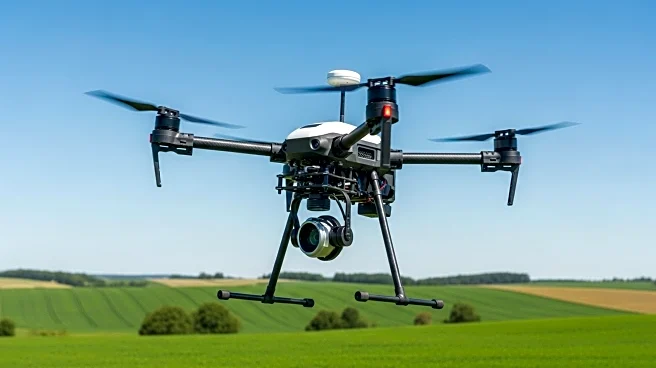What's Happening?
The antiviral and antimicrobial technology market is experiencing significant growth, driven by increased awareness of infectious disease threats and demand for protective solutions. North America holds the largest market share, with Asia Pacific expected to expand rapidly. Technologies such as metallic ion/oxide-based solutions dominate the market, while graphene/nanocarbon-based actives are anticipated to grow at the fastest rate. The healthcare sector is a major end-user, utilizing these technologies to prevent healthcare-associated infections. The market is also expanding into consumer products, construction, and packaging, with coatings and paints being the most widely used form factor.
Why It's Important?
The growth of the antiviral and antimicrobial technology market is crucial for enhancing safety and sustainability across various industries. In healthcare, these technologies help reduce hospital-acquired infections, improving patient outcomes and reducing healthcare costs. The increased consumer demand for hygiene products post-pandemic is driving innovation in textiles and packaging, offering new commercial opportunities. Regulatory frameworks supporting antimicrobial compliance are accelerating the adoption of these technologies globally. Advances in materials and nanotechnologies are ensuring longer-lasting protection, fostering innovation and economic growth.
What's Next?
The market is poised for further expansion as rapid diagnostic technologies and artificial intelligence redefine antimicrobial innovation. AI is being used to accelerate research and development, optimizing drug formulations and improving infection detection. The integration of antimicrobial technologies into everyday products and environments is expected to continue, driven by consumer demand and regulatory support. Companies may focus on developing more sustainable and effective solutions, leveraging AI and nanotechnology to enhance product offerings.
Beyond the Headlines
The market's growth highlights the intersection of technology and public health, emphasizing the need for innovative solutions to combat infectious diseases. Ethical considerations regarding antimicrobial resistance and the environmental impact of these technologies are important factors for stakeholders. The role of AI in accelerating research and diagnostics presents opportunities and challenges, including data privacy and the need for regulatory oversight. The market's expansion into diverse industries underscores the importance of interdisciplinary collaboration in addressing global health challenges.











